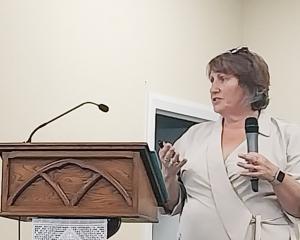Eight years ago, the first natural ice luge in the southern hemisphere opened at Naseby. Central Otago reporter Lynda van Kempen asks some of the driving forces behind the luge whether their hopes for the facility have been fulfilled.
Lugers training on the Naseby track are starting to make their mark on the international stage.
That shows building the luge is paying dividends, New Zealand Olympic Luge Association president Geoff Balme says.
"I'd say not only has the facility fulfilled our expectations, it's surpassed them.''
In January this year, Naseby-based luger Jack Leslie won the natural track luge junior World Cup in Austria.
He won the four-race circuit with 330 points - 15 ahead of his nearest rival.
Leslie is from Christchurch but trains in Naseby during winter. He now competes against 40 athletes from 11 countries.
His effort came three weeks after he made history by becoming the first New Zealand luger to earn a podium finish in an international race.
Mr Balme says Leslie, who will soon be back training at Naseby, is one of the success stories linked with the track.
"Jack's achievements are good both for him and for the kids coming through. It gives them someone to look up to and something to aim at.''
The luging fraternity is like an extended family, he says.
The aim of the facility was to boost participation in the sport and that goal has certainly been reached.
"Kids from all over the country are getting involved in luging, as well as the local kids, and they're also starting to have an impact on the world natural track competition, making people sit up and take notice.''
The winter school holiday camps based at Naseby's ice sports facilities were proving popular, with both children new to the sports and experienced competitors lining up to compete.
Young athletes have the option of attending luge camps or ice camps, which include ice hockey, skating and curling as well as luging, and the latter has become the most popular, Mr Balme says.
"It seems they want a mix of ice sports, trying a little bit of everything, and we can easily cater for that here.''
All the facilities - the 360m luge track, the indoor curling rink and the outdoor Maniototo Ice Rink - are on the same site.
The adrenaline surge as you come flying down the luge is the big attraction, ice rink president Jock Scott says.
Developing the luge track has paid off but it has been a huge learning curve, he says.
"We've been up-speccing it progressively, making changes to the luge to make it easier to keep the snow on it, for example.''
As with the rest of the outdoor facilities, the pivotal factor is the weather.
"Just like the skifields, we're dependent on a snowfall or two to keep things ticking along.''
"A few series of frosts so we can make snow and some freezing nights so we don't have to spend much on power to keep the ice and snow there, that helps, too.''
Mr Scott is positive about the future of the ice sports facilities and says the town has become known as the ice sports capital of the country.
One of the main priorities in the future will be to find "fresh blood'' - a new crop of volunteers willing to devote time to the facilities.
All the facilities depend on volunteer labour.
"Our main focus, looking into the future, is finding people with the time and energy to take over from the current volunteers when they give it away.''
The town residents were apparently enjoying luging back in the 1950s and 1960s, with their own natural luge track, he says.
"They made their own track, and the kids would luge down past the school and had competitions to see who could go the furthest.''
The current facilities, including the luge and the indoor curling rink, gave young people the opportunity to travel overseas if they broke into the top level of their sport, he said.
"Being able to go overseas is a big deal and if you can wear that silver fern, what a privilege that is.''
The sports also attracted visitors to the region in the same way the Otago Central Rail Trail has "regenerated'' towns along its route, Mr Scott says.
A snow park has been added to the mix and people can bring their own sleds or use the ones provided.














